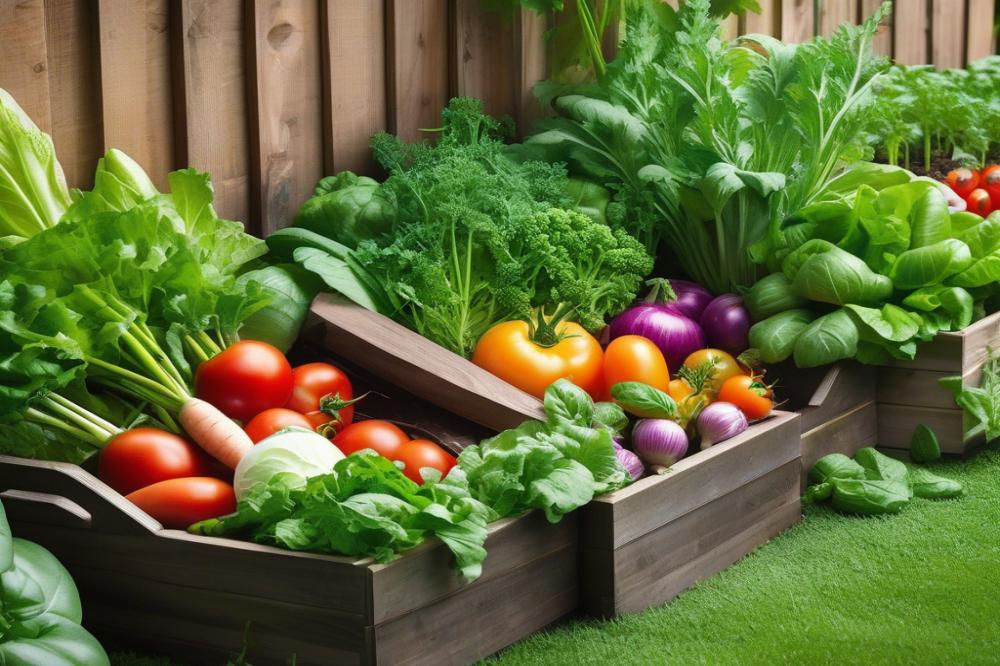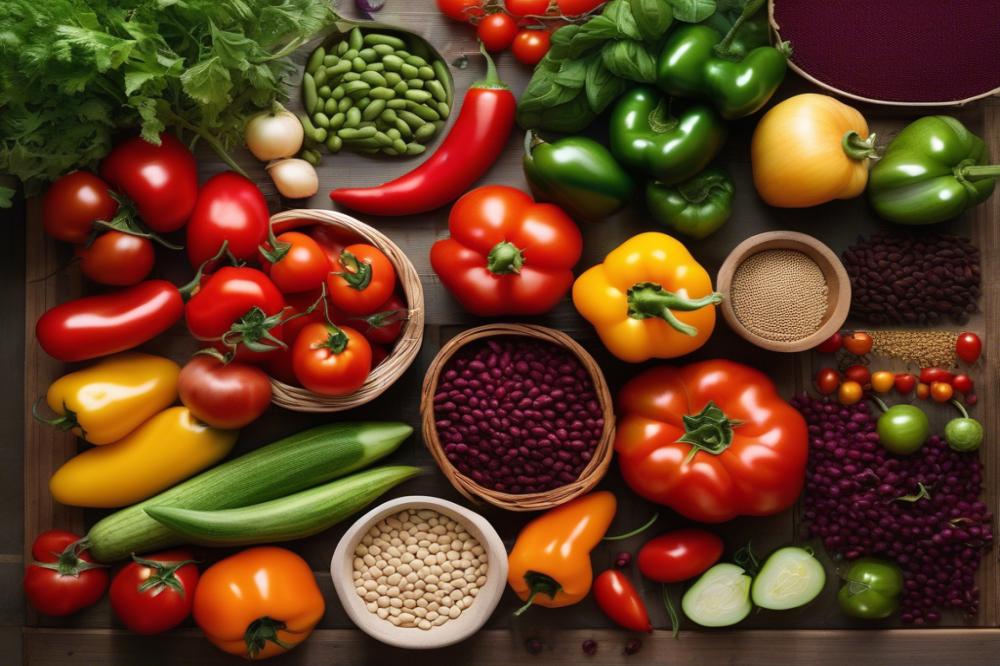Introduction
Black Krim Tomatoes are a beloved heirloom variety known for their rich, tangy flavor and striking dark coloration. Originating from the Crimea region, these tomatoes bring a distinct taste that many gardeners and cooks cherish. Their complex flavor profile can elevate any dish, making them a fantastic choice for both home gardening enthusiasts and culinary aficionados.
heirloom tomatoes are significant in today’s gardening scene. They offer unique flavors and a connection to the past. Many gardeners prefer heirloom varieties because they often come with a rich history, promising delicious and nutritious fruits. Growing them supports biodiversity and encourages sustainable practices in organic gardening.
The popularity of Black Krim Tomatoes stems from their exceptional taste and versatility in recipes. Farmers’ markets and home gardens alike celebrate their rich and slightly smoky nuances. As you begin your home gardening journey, consider focusing on several aspects of tomato care. From plant location to soil requirements, each detail will impact the plant’s growth. Proper sun exposure, suitable watering, and effective fertilization techniques all play critical roles. Additionally, keeping a keen eye on disease prevention ensures that your tomatoes thrive throughout the season.
In the upcoming sections, we will provide essential growing tips to help you cultivate these flavorful tomatoes successfully. Whether you are a seasoned gardener or a newcomer to this hobby, the right strategies can lead to an abundant harvest of these delightful fruits.
Choosing the Right Location


Plant location plays a crucial role in the success of your garden. The layout should feel intentional, ensuring each plant has the best chance to thrive. For heirloom tomatoes like Black Krim, picking the right space is essential.
Sun exposure is vital. These tomatoes need full sunlight for at least six to eight hours a day. If you place them in a shady area, they may struggle to produce fruit, affecting tomato care and overall yield.
Don’t overlook airflow, either. Good ventilation around your plants can help prevent diseases. If a garden area is too cramped or lacks airflow, moisture can build up, leading to problems. Additionally, consider shelter from strong winds.
Wind can damage tender stems and knock over plants. Placing your tomatoes near a fence, wall, or taller plants can provide much-needed protection. Using these strategies in home gardening will not only promote growth but also support healthy soil requirements.
Remember to keep in mind other factors such as watering and fertilization. When combined with the right location, these elements form the foundation for successful tomato cultivation. Taking the time to evaluate your garden space can pay off with a bountiful harvest.
Soil Requirements


Growing heirloom tomatoes, like Black Krim, demands attention to soil composition. The ideal mix contains a balance of loamy, sandy, and clay textures. This combination promotes good drainage while retaining moisture.
The pH level of the soil is crucial. Aim for a range between 6.0 and 6.8 for optimal tomato growth. If the soil is too acidic, lime can be added to raise the pH. Conversely, sulfur might be necessary if the soil is too alkaline.
Organic matter enriches the soil. Compost is an excellent addition, as it enhances fertility and improves soil structure. This nutrient-rich amendment also encourages healthy microbial activity, essential for disease prevention.
Fertile soil is key for robust plants. Regular testing will help identify nutrient deficiencies. When needed, using organic fertilizers can boost growth without harming the environment.
Location matters when considering soil health. Planting in a well-drained area with plenty of sun exposure will maximize growth potential. Remember, the better the soil conditions, the more delicious your heirloom tomatoes will be.
Watering practices influence soil moisture. Consistency is important, as uneven watering can lead to issues like blossom end rot. Keep the soil consistently moist but not waterlogged.
Tomato care goes beyond just planting; understanding soil requirements makes a significant difference. Always think about the health of the soil before you begin your home gardening journey. Healthy soil nurtures healthy plants, leading to a bountiful harvest.
Watering Techniques


Tomatoes thrive with proper watering techniques. Providing the right amount of water is essential for healthy growth. Aim for a deep soaking rather than frequent shallow watering. This approach encourages roots to grow deeply, which helps them access moisture in the soil. You want to keep your heirloom tomatoes hydrated, especially during hot weather.
Best Practices for Watering Tomatoes
Watering in the morning is often recommended. It reduces evaporation and allows the soil to absorb moisture before the heat of the day. Use a soaker hose or drip irrigation to minimize water on the leaves. This method also helps to prevent disease by keeping foliage dry. Mulching around the plants can retain soil moisture and regulate temperature.
Signs of Overwatering and Underwatering
Recognizing signs of overwatering is crucial for tomato care. If leaves turn yellow and start to drop, you might be giving too much water. A soggy surface or wilted plants can also indicate trouble. Conversely, underwatering can be just as damaging. Look for curling leaves, dry soil, and fruit cracks to detect this problem. Both conditions stress the plants and can impact growth.
Importance of Consistent Moisture Levels
Maintaining consistent moisture levels helps ensure healthy plant development. Fluctuations in soil moisture can lead to issues like blossom end rot and uneven ripening. Developing a routine for your home gardening is key. Factors like soil requirements and sun exposure greatly influence watering needs. Monitor your garden regularly. Adjust your watering schedule based on weather conditions or plant stress.
Fertilization Methods
Recommended fertilizers for Black Krim Tomatoes
Using the right fertilizers can make all the difference in growing heirloom tomatoes. A balanced fertilizer with an N-P-K ratio of 5-10-10 is often recommended. This blend encourages lush foliage and healthy fruit development. Additionally, organic options such as compost or aged manure can provide essential nutrients to the soil. Fish emulsion is another good choice for those leaning toward organic gardening. It helps boost growth and improve overall health in your plants.
Timing and frequency of fertilization
Fertilization should start when plants are young. As seedlings grow, apply fertilizer every four to six weeks. This routine keeps nutrient levels consistent. Pay attention to signs that your plants might need more nutrients. If foliage appears yellow or growth seems stunted, a boost can help. Always remember that too much fertilizer can harm your plants, so moderation is vital. Adjust the schedule based on plant response and soil tests.
Organic gardening options for nutrient management
For those who prefer natural solutions, organic gardening offers several effective strategies. Crop rotation helps to preserve soil health and reduces pests. Also, companion planting can enhance nutrient uptake by pairing plants that benefit each other. Adding organic matter like straw or leaves will improve soil structure and moisture retention. Always monitor your plant location and ensure they receive adequate sun exposure. Soil requirements must be met for the best results. Watering practices also play a role, so be sure to hydrate your plants deeply but infrequently. Regular tomato care will promote disease prevention and encourage a robust harvest.
Disease Prevention Strategies
Common Diseases Affecting Black Krim Tomatoes
Tomatoes are susceptible to various diseases. Black Krim tomatoes can encounter issues such as early blight and blossom end rot. Fungal infections frequently thrive in warm, moist conditions. Bacterial wilt also presents challenges, often causing wilting and yellowing leaves. Awareness of these conditions is crucial for successful home gardening.
Preventive Measures and Best Practices for Disease Management
Effective tomato care begins with choosing the right plant location. Select a spot that offers plenty of sun exposure. Sunlight helps strengthen plants and makes them more resilient against diseases. Quality soil is another key factor; it should drain well and be rich in nutrients. Regular watering helps keep plants hydrated, but avoid waterlogging the soil.
Utilizing organic gardening methods can actively support the health of your tomatoes. Natural compost can improve soil quality, providing essential nutrients. Furthermore, consider using disease-resistant varieties as a protective measure. Applying mulch not only retains soil moisture but also minimizes fungal spores. Keeping the garden free of debris and weeds reduces possible disease reservoirs.
Importance of Crop Rotation and Companion Planting
Crop rotation plays a vital role in disease prevention. Changing the location of your tomatoes each year disrupts the lifecycle of pathogens. This simple strategy prevents soil-borne diseases from re-emerging. Similarly, companion planting can create a healthier garden environment. Certain plants can repel pests or enhance growth. Marigolds, for instance, are known to deter nematodes that might harm tomato roots.
Incorporating these practices into your home gardening routine allows for better disease management. By being proactive, you can safeguard both your plants and harvest. A little effort in prevention goes a long way toward enjoying healthy heirloom tomatoes. Developing knowledge on these techniques will pay off when it’s time to enjoy your fresh produce.
Harvesting and Storage
Signs of Ripeness for Black Krim Tomatoes
When Black Krim tomatoes are ripe, their skin turns a dark, rich color with shades of green and brown. A firm yet tender feel indicates they are ready to pick. Look for slight softness near the stem, as this is a good sign of ripeness. Unique variations in color may also occur, giving them a rustic look. Remember, once they start to lose their green undertones, they are nearing peak flavor. It’s best to harvest while they have a slight sheen on their surface, which signals freshness.
Best Practices for Harvesting to Avoid Damage
Picking tomatoes requires gentle hands to prevent bruising. Hold the fruit with one hand and use the other to twist it off the vine. Avoid pulling, as this can risk breaking branches. Consider using garden scissors to snip the stem close to the fruit. This method reduces pressure on the plant and helps maintain its health. Always harvest in the morning, when temperatures are cooler, to retain moisture. Be mindful of the plant location; avoid stepping on the soil around the base to keep the roots intact.
Tips for Storing and Preserving Tomatoes After Harvest
After harvesting, store tomatoes in a cool, dry place to prolong their freshness. Avoid refrigeration, as cold temperatures can ruin their flavor and texture. Instead, place them stem-side up on a flat surface. This positioning reduces pressure on the fruit and minimizes bruising. If you have more than you can use, consider canning or drying them for future meals. Organic gardening practices suggest using containers that allow airflow for dried tomatoes, which promotes quality. Lastly, always monitor your heirloom tomatoes during storage to check for any signs of spoilage. Keeping them in a basket can allow for proper ventilation and reduce moisture buildup.
All About Growing Black Krim Tomatoes at Home
To recap, successful cultivation begins with selecting the right spot, such as a location that enjoys plenty of sunlight. The soil must be rich in nutrients and well-draining. Regular watering is essential, especially as the plants start to flower and produce fruit. Protecting the plants from pests can also make a difference in yield. By understanding the needs of this variety, you can maximize your harvest and grow flavorful fruits.
Trying heirloom varieties can be a rewarding venture in home gardening. Each variety carries its own history and flavor profile, adding a special touch to your garden. Black Krim is just one of many heirlooms that can inspire creativity in your meals.
Ultimately, the experience of growing your own tomatoes is fulfilling. Watching the plants grow and bloom connects you to nature in a way that store-bought produce simply cannot. Embrace the challenge and joy of gardening. You’ll find that patience and dedication lead to delicious rewards. Enjoy the journey, and let it inspire more home gardening adventures. Your taste buds will thank you.



